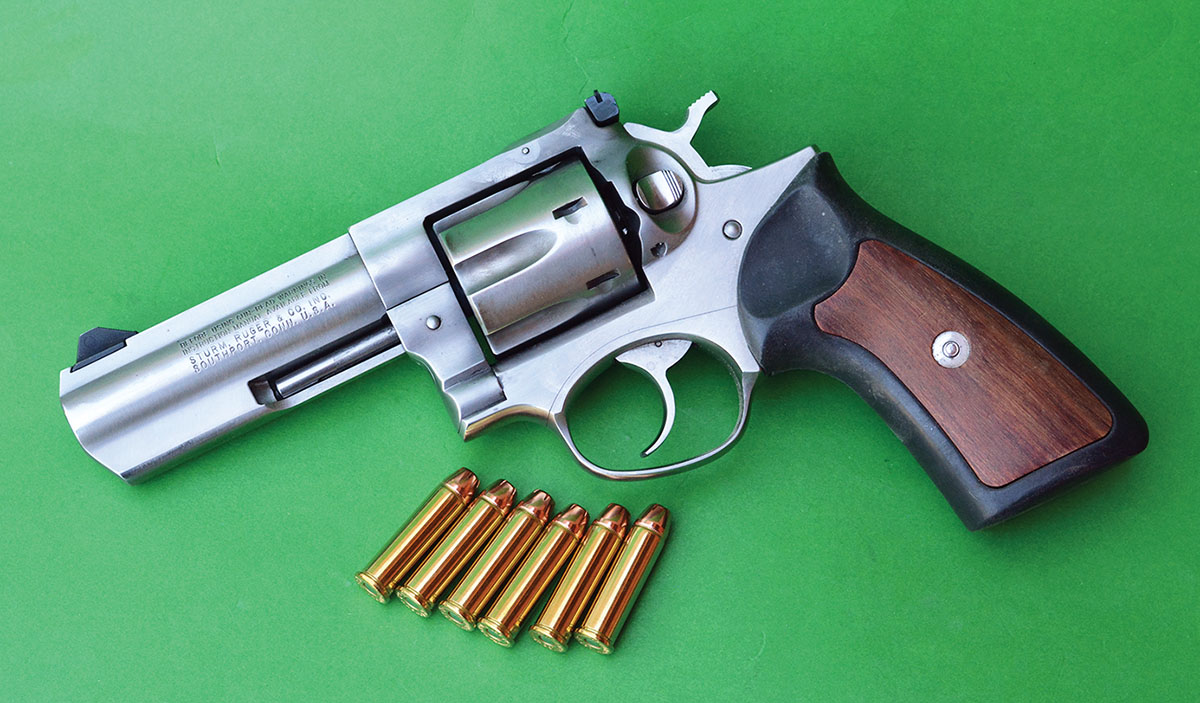
The GP100 is offered in the widely popular and versatile 357 Magnum cartridge.
Beginning in 1985, Ruger introduced a truly modern double-action revolver, known as the GP100 that is strong, robust, highly durable, accurate and offered in many variations intended for competition, defense and sporting applications. In addition to being available in 22 Long Rifle, 10mm Auto and 44 Special, its most popular chambering is the versatile 357 Magnum, which is available in six-, seven- and eight-shot versions. According to Ruger, sales for the first eight years were around 300,000 units, which was less than expected due to the upswing in popularity of autoloading pistols during the 1980s. However, revolvers have clearly made a huge comeback due to their versatility, power, reliability, safety and accuracy. Today, the GP100 is enjoying very brisk sales and rightfully so!
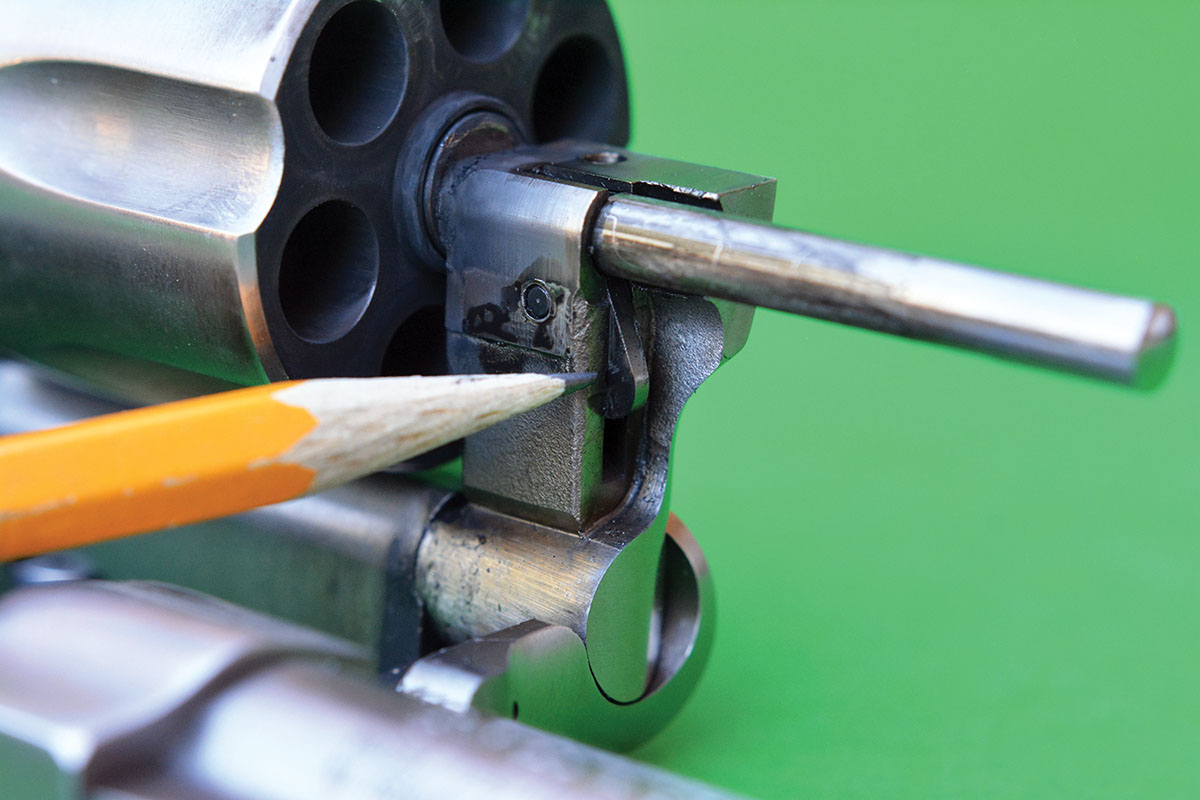
The crane locks positively into the frame, which helps assure that chamber-to-bore alignment remains unchanged and serves to increase longevity.
This story really begins in 1971, when Ruger introduced the Security-Six (adjustable sights), Speed-Six and Service-Six (those two featuring fixed sights) series of double-action sixguns. This was during the era when Smith & Wesson and Colt owned the double-action revolver market, but the new Ruger went head-to-head and sold very well against the established competition. Despite the gun being somewhat complicated to produce, it was introduced with a modest retail price of $89 (as a reminder, $89 had considerably more purchase power in 1971 than it does today). From 1971 through 1985, more than 1,210,000 units were sold. The frame was only modestly larger in size than the S&W Model 19, but it was smaller than the Colt Python and the S&W L-Frame, which was still a decade away from being developed. But the Security-Six proved unusually strong, robust or rather, tough as nails, and gave outstanding durability, as it could fire a steady diet of magnum loads with no ill effects. The mechanism was unusual in many respects, but most notable is that there was no side plate; rather the lockwork was accessed by removing the trigger guard and was a unique modular design and takedown could be accomplished with just a coin! The construction was of heat-treated chrome-molybdenum steel and later, stainless steel. Virtually unbreakable piano wire coil springs were incorporated, while the firing pin was frame mounted and a transfer bar system installed for safety. The cylinder locked at the breech and at the end of the ejector rod in a somewhat conventional method.
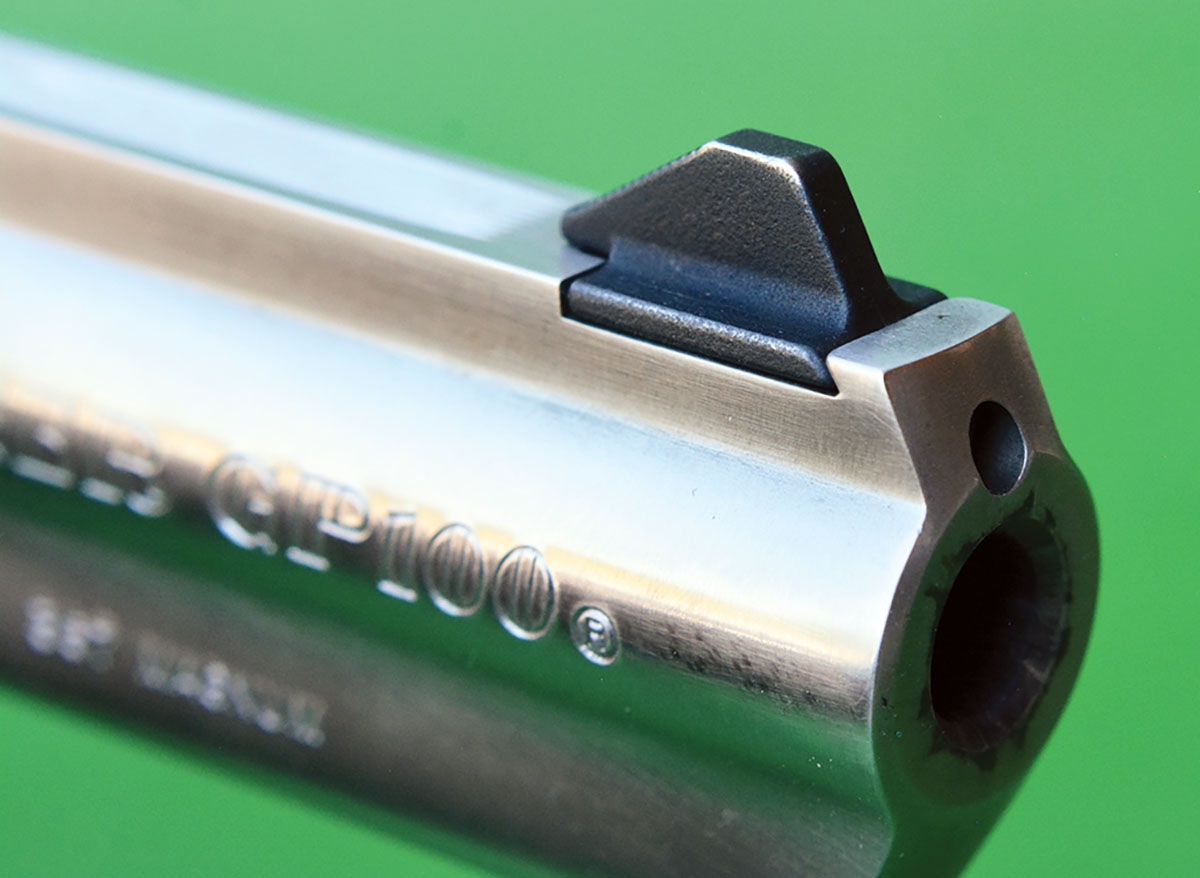
The front sight is easily interchangeable.
While the Security-Six was a very trouble-free gun, Ruger wanted to further improve it with practical design features to increase ergonomics, strength, durability and even accuracy. This project was outlined by Ruger with some very strict guidelines for improvement, which was formally introduced in 1985 as the GP100. While the basic design principles remained the same as the Security-Six with a solid frame, modular design and tool-free takedown, very few parts are the same. Briefly, the most significant changes include the cylinder diameter, which was increased from around 1.490 to 1.545 inches and like the Security-Six. The bolt notches are positioned to prevent weakening of the chamber walls. The cylinder breech locking system and ratchet remained more or less the same; however, the crane locks into the front of the frame, which positively locks the cylinder for a very rigid system, but also helps to keep chambers in proper alignment with the bore. Incidentally, the Security-Six-style lock on the end of the ejector rod was eliminated. Although the design is different than the famous Smith & Wesson New Century or Triple Lock revolver, the principle is the same.
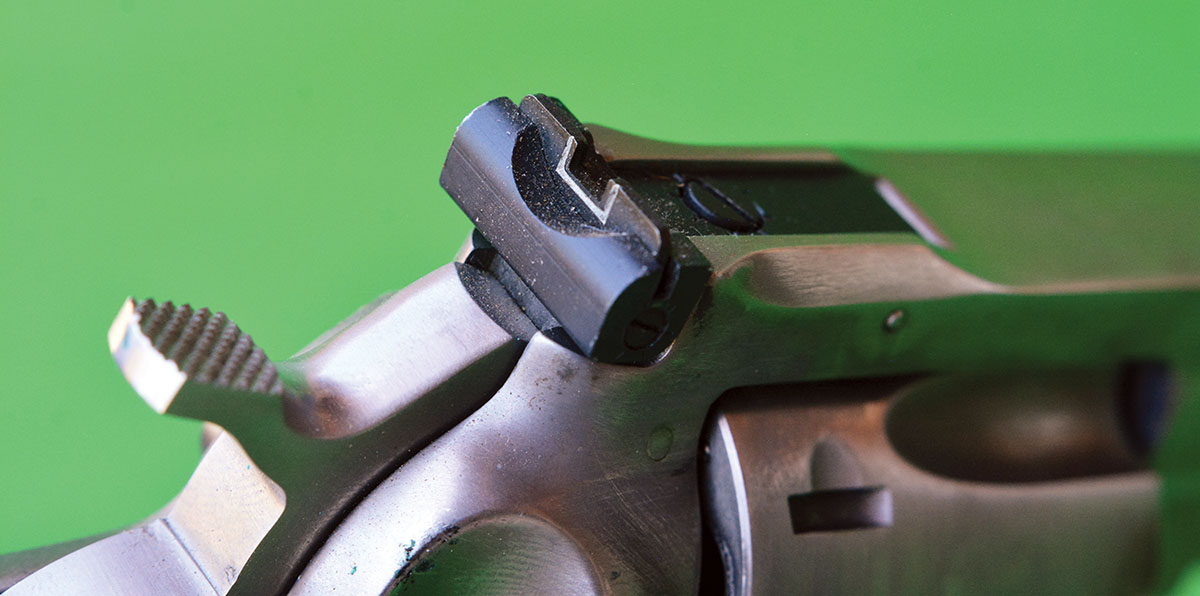
The rear sight is fully adjustable for windage and elevation.
The traditionally-shaped grip frame on the Security-Six was changed to what Ruger refers to as a “peg frame” that allows a large variety of grips size and shapes to be used. Basically, the grip is removed or installed from the bottom and slips over the peg frame.
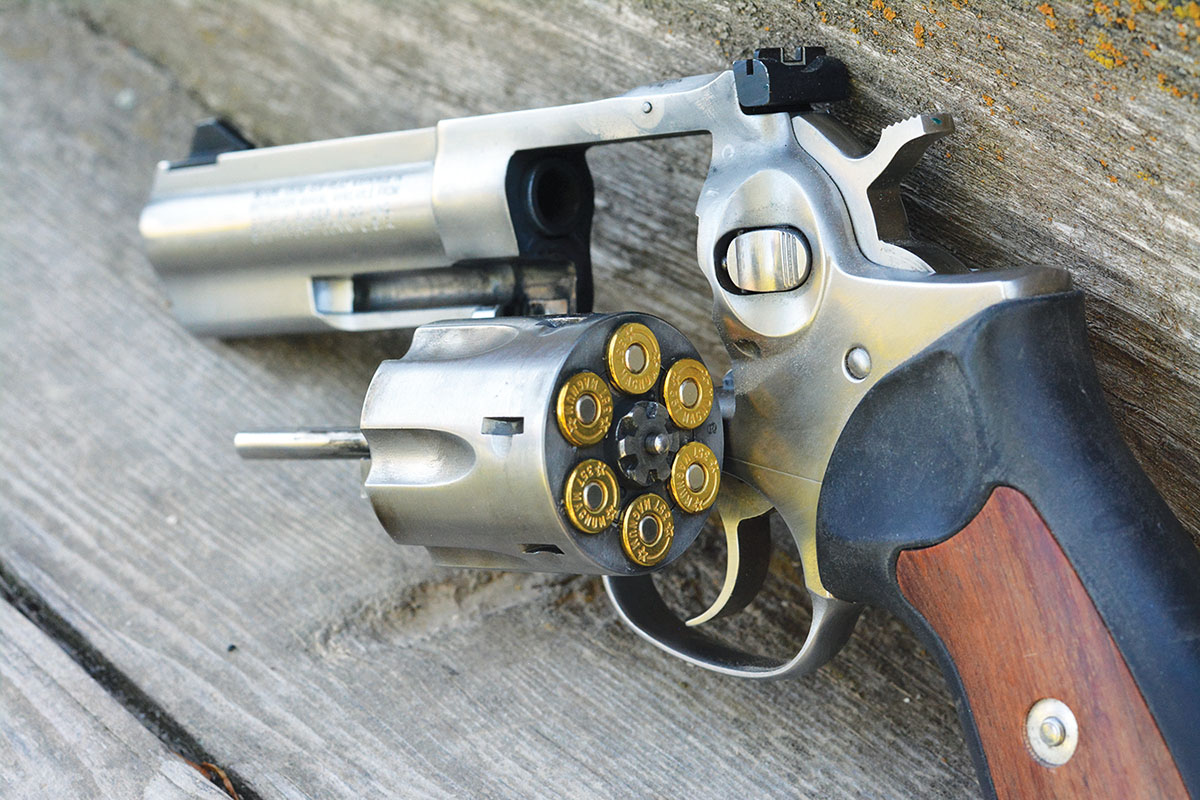
The GP100 is a traditional six-shot double-action revolver. However, a seven-shot version is also available.
GP100 barrels feature cold hammer-forged rifling that are very good barrels and offer unusually long life. (Note: Security-Six barrels were cut rifled.) Initially, there was a heavy barrel with under-lug and a top rib, but there was also a standard-weight barrel. But today, there are many barrel configurations that meet the needs of most shooters, with many offering a futuristic look. Another excellent feature includes interchangeable front sights for different sight picture options.
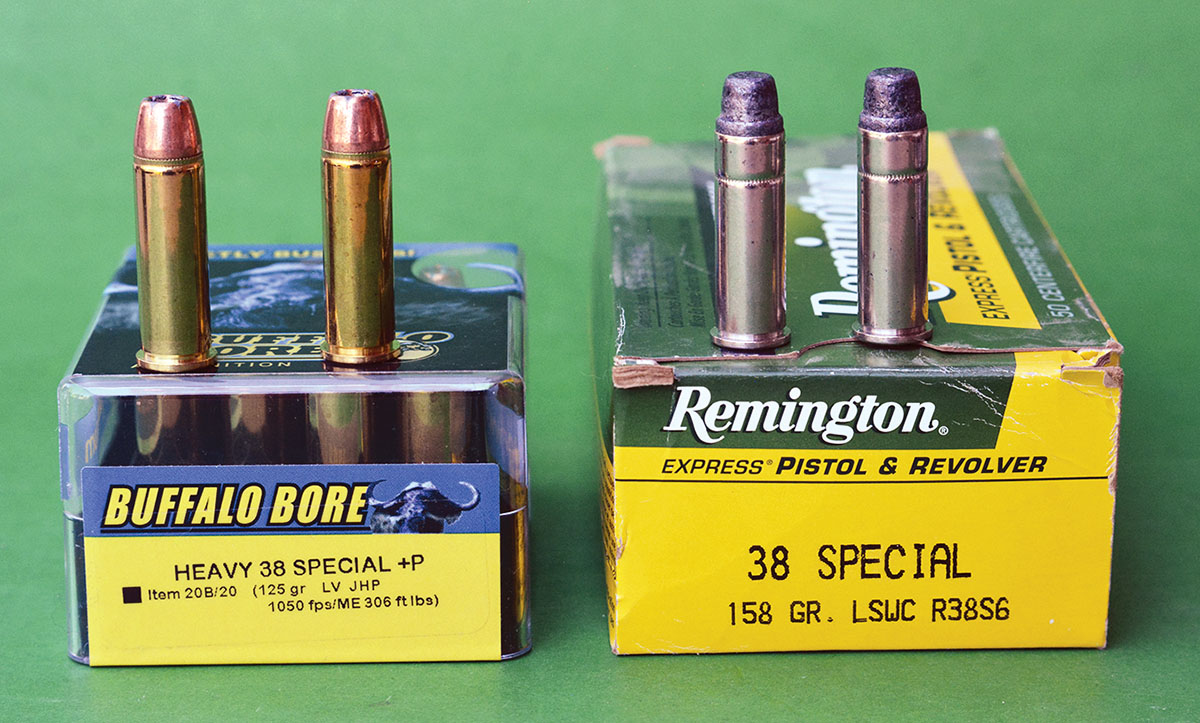
For the recoil sensitive, 38 Special loads are an excellent choice.
For today’s purposes, a GP100 stainless steel with a 4.20-inch barrel with under-lug was selected, which has been a popular variation since its introduction. No one can state what the most versatile revolver or revolver cartridge is, but regardless, a durable and accurate 357 Magnum would certainly be a contender. First, it fires lower cost, light recoiling 38 Specials for target work, hunting small game (without total meat destruction) or it can be used with premium defense loads for more recoil-sensitive shooters. When stoked with full-house 357 defense loads, it is formidable and highly-respected for that purpose, but many premium defense loads will also perform very well on deer-sized game. However, when loaded with heavyweight cast bullets that normally weigh between 160 to 180 grains and are designed for deep penetration that can exceed 3 feet, heavier game can be taken if needed. For example, Doug Wesson was the driving force in developing the 357 Magnum in 1935. While he was a dude, he knew how to burn powder and during his trips out west, he took elk, antelope and even grizzly bear with a Smith & Wesson 357 Registered Magnum – some at distances exceeding 200 yards!
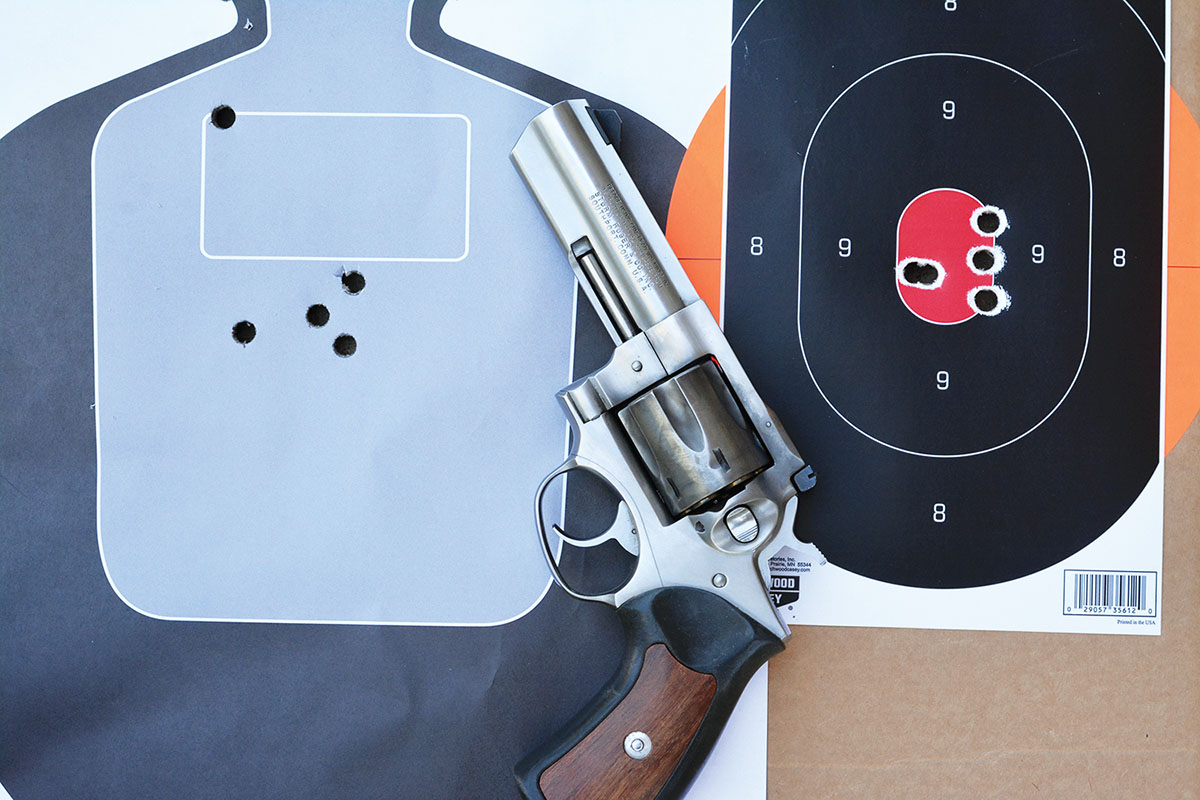
These targets were each fired at 25 yards. The target on the left was fired in double-action mode, while the target on the right was fired in single-action mode with the aid of sandbag rests.
My experience with the 357 is extensive. I likewise have taken many head of big game, have used them in IHMSA competitions with outstanding success and have great respect for its many virtues and versatility.
The single-action trigger pull of the sample GP100 broke at 76 ounces or 4¾-pounds, but the pull was crisp. Plus, a skilled pistol smith can work that pull down to roughly half that figure. Overall, the gun leaves very little room for criticism. For example, the cylinder locks up with minimal side-play and end-shake. Using a Brownells Range Rod, each chamber was checked for alignment, which was right on the money. The barrel cylinder gap measured .005 inch, the forcing cone is cut properly and is reasonably smooth.
To date, more than 2,000 rounds have been fired through this GP100. In addition to flawless operation, it has proven capable of sub 1-inch groups at 25 yards with many different factory loads and handloads that contained both jacketed and cast bullets (see the accompanying tables for further details).
The Ruger GP100 is a modern sixgun that offers unusual reliability, is highly durable and offers outstanding accuracy, while the 357 Magnum remains widely popular due to its power and versatility.
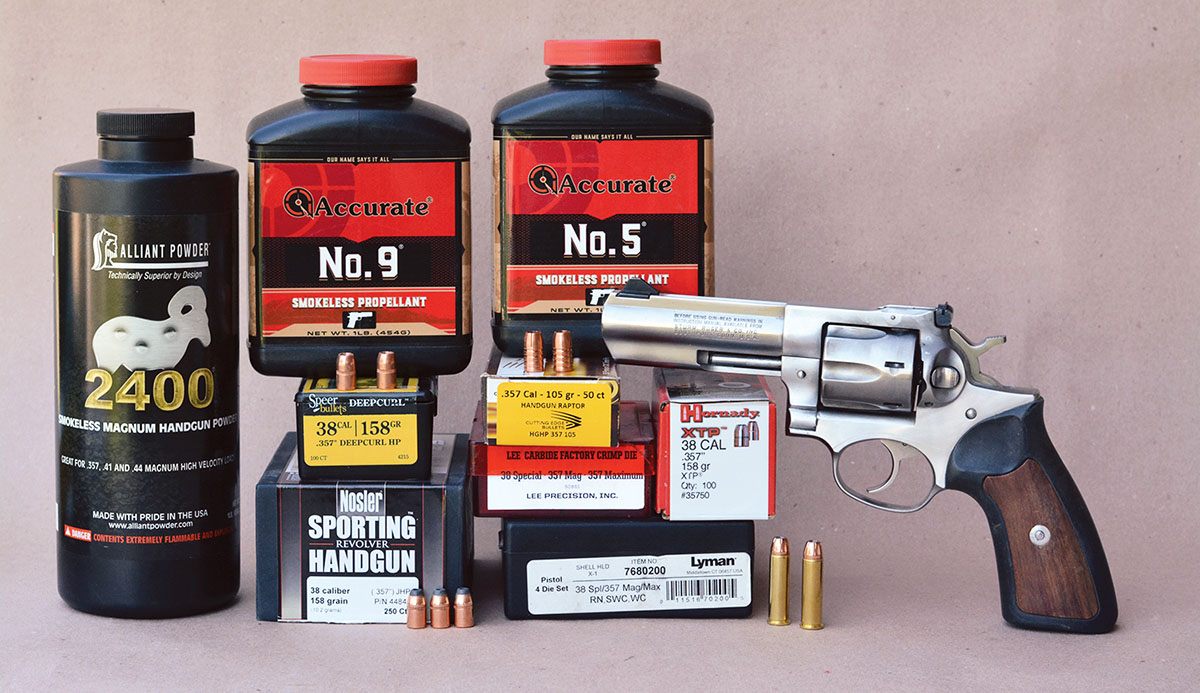
In addition to factory ammunition, Brian developed 357 Magnum handloading data for the Ruger GP100.








.jpg)
.jpg)


